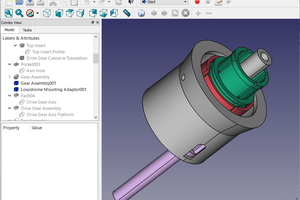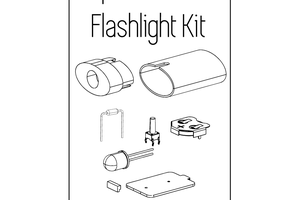A Gothic Lantern is a captivating piece of lighting that brings the allure of the Victorian Era into your home. The lantern is adorned with ornate top and bottom ornaments, reminiscent of the Gothic style that was prevalent during the Victorian Era. My curiosity to create something new and interesting got me into this gothic style rechargeable lantern. The design is both nostalgic and timeless, making the Gothic Lantern a perfect fit for homes that cherish a touch of historical charm. Watch this video for detailed step by step instructions on how to build this lantern and for a complete instruction on how the electronic circuit works inside the lantern.
Downloading The STL Files
I went online and searched for a "Gothic Lantern" and found a very popular design by Shira.
The STL files were free to download from "Cults3D.com". It was literally a hard to resist 3D model. So, I went ahead and downloaded the lantern's STL files for my project.
Modifying The STL Files
The downloaded STL files only comes with the top and the body of the lantern. However, my aim is to add some electronics to the design to turn it into a rechargeable lantern. To achieve this, I created few more 3D models and added them to the design.
I created a base that can hold an "18650 battery holder" and an "USB Type-A charging cable".
I also created a "LED holder" that will go inside the body of the lantern. The LED holder has 10 x 5mm holes to hold the 10 white LEDs in it. It will also house the "TP4056 18650 Lithium battery charging module". I also created a "ring" that will go on top of the lantern. Holding this ring, you can go anywhere with this lantern.
3D printing
Once the 3D models were sorted, it was time for me to fire up my 3D printing oven and start printing these 3D models.
I used:
- 1.75mm Cold White PLA Filament, and printed the models with
- 0.2mm - with 0% infill - and with support.
As we all know, 3D printing is the process that uses computer-aided design or CAD, to create objects layer by layer. 3D printing is not a new technology, its been there since 1980's, when Charles W. Hull invented the process and created the first 3D-printed part. Since then, the field of 3D printing has grown exponentially and holds countless possibilities. The 3D printing process fascinates me a lot and I sometimes love to sit near my printer and watch these layers getting printed.
The entire printing process took a little over 53 hours and this was the final result.
Circuit Diagram
The circuit is very simple. A USB Type-A charging cable connects to the input of the TP4056 Module. The 18650 Battery connects to the B+ and B- terminals of the module. And finally, the LEDs connect parallelly to the OUT+ and OUT- terminals of the module with a push button switch connected to the +ve terminal. Using this switch we can turn on or off the lantern.
Soldering
Lets start by soldering the wires to the LEDs. As previously discussed, all these LEDs will be parallelly connected to each other.
Next, I screwed the 18650 battery holder to the base of the lantern. After that, I superglued one of the LED holders to the base, and then one by one slided the LEDs into the holes of the LED holder.
After that, I soldered the TP4056 module as per the circuit diagram. To conclude the setup, I pushed the remaining LEDs into the holes of the 2nd half of the LED holder and then superglued it to the base of the lantern.
Coloring
I wanted to give this lantern a "rustic wooden texture".
For that I applied acrylic "Raw Sienna" and "Burnt Umber" to the body of the lantern.
Final Assembly
I wanted this lantern to have a soft illumination without any harsh light. So, I went ahead and used the white plastic of a milk bottle to give this lantern a defused lighting effect.
I used metal pieces and magnets to stick the bottom plate to the base of the lantern.
Once all the electronics bits were sorted, I screwed the body of the lantern to the...
Read more » Hulk
Hulk










 Pat Mutia
Pat Mutia
 marciot
marciot

 Sean Hodgins
Sean Hodgins